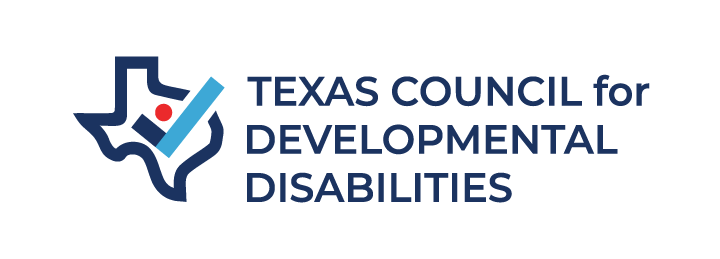

Table of Contents
People with disabilities vote! Voting locations, also known as polling locations, should be accessible for all voters. In preparation for the November 2024 elections, we have gathered resources related to accessible voting laws, assistance at polling locations, and mail-in voting options. This information is not comprehensive but provides a starting point to ensure that all voters with disabilities can cast their ballots in elections.
In collaboration with partners in the disability community, TCDD developed the video below to share essential voting information for people with disabilities and poll workers. The video covers topics such as voting with accommodations and how poll workers can support voters with disabilities.
New Accessibility Laws at Polling Locations
In 2023, Texas lawmakers passed Senate Bill (SB) 477 by Sen. Judith Zaffirini, creating new accessibility requirements for polling locations to support voters with disabilities. It allows voters with mobility-related disabilities to cast their ballots without waiting in long lines. Previously, poll workers could let such voters skip the line, but the new law makes this accommodation mandatory.
The new law also requires each polling location to designate a parking space for curbside voting. This space is in addition to spaces already designated for people with disabilities. New guidelines require the curbside space to show a telephone number or have a button or intercom system. This way, voters may request assistance from the election officer at the polling location.
Available accommodations for voters with disabilities must be posted on the county clerk’s website. The website must also include the early voting application form, allowing a person to easily complete the application directly on the website before printing. Counties can use a standardized application form prepared by the Texas Secretary of State’s Office.
Other accessible accommodations at polling locations include the following:
Signs: Signs at polling locations should be simple, clear, and easy to understand. Signs should provide instruction and identify accessible pathways in voting areas.
Easy access: Remove barriers, objects, or obstacles that could get in a voter’s way. Cords, cables, and wires should be secure and not blocking pathways.
Height clearance: Sign-in tables and voting booths must have adequate height clearance for voters using wheelchairs or other assistive devices.
Accessible Voting Options
Voters with disabilities can receive assistance when registering to vote and when casting ballots. If you need assistance to vote at a polling location, here are some things to know.
- When you arrive at a polling location, tell a poll worker that you are a voter who needs help to vote. You do not have to provide proof of your disability.
- If you are unable to enter a polling location, you can ask a poll worker to bring your ballot to the entrance of the polling location or to a vehicle parked at the curbside of the polling location. After you complete your ballot, the poll worker will collect it and put it in the ballot box for you. You can also ask to have another person of your choice bring you your ballot, collect it, and put it in the ballot box.
- If you go by yourself to a polling location, you may want to call ahead so poll workers will be ready to assist you when you arrive.
Who Can Help You Vote
You can receive help to vote from: (A) any person you choose who is not a poll worker, (B) two poll workers on Election Day, or (C) one poll worker during early voting.
You cannot receive help from: (A) your employer, (B) an agent of your employer, or (C) an officer or agent of your union if you are a member of one.
A person who helps you must:
- fill out a form that states the person’s name, address, and relationship to you (for example, the person could be a friend or relative);
- sign an oath that you are eligible to receive assistance to vote and that they will not influence your vote;
- read the entire ballot to you unless you ask to have only parts of the ballot read to you.
- mark your ballot exactly as you direct them (only if you need assistance marking your ballot); and
- keep your voting choices secret from anyone else.
If you choose to get help from a poll worker, then poll watchers and election inspectors are allowed to watch you vote, and poll watchers can inspect your ballot to ensure it was marked as you directed. However, if you are helped by someone you chose who is not a poll worker, no one else can watch you vote.
If a person provides transportation to a polling location for seven or more people who are not relatives, that person must sign a form with their name and address. They must also indicate if they are also helping a voter cast a ballot.
Voting by Mail
To be eligible to vote early by mail in Texas, you must:
- be 65 years or older;
- be sick or have a disability;
- be out of the county on Election Day and during in-person early voting;
- be expected to give birth within three weeks before or after Election Day; or
- be in jail, but otherwise eligible.
Instructions on how to fill out, print, and send your ballot by mail can be found on the Texas Secretary of State website. The website also includes information on how to track your ballot once you have mailed it.
If you have trouble voting, call the Disability Rights Texas (DRTx) hotline at 1-888-796-VOTE (8683) or email vote@DRTX.org. DRTx staff trains people with disabilities on voting rights, surveys polling places for accessibility, works with election officials and responds to legislative inquiries.
You can find additional information and resources about voting and accessibility on our Voting Information webpage.
